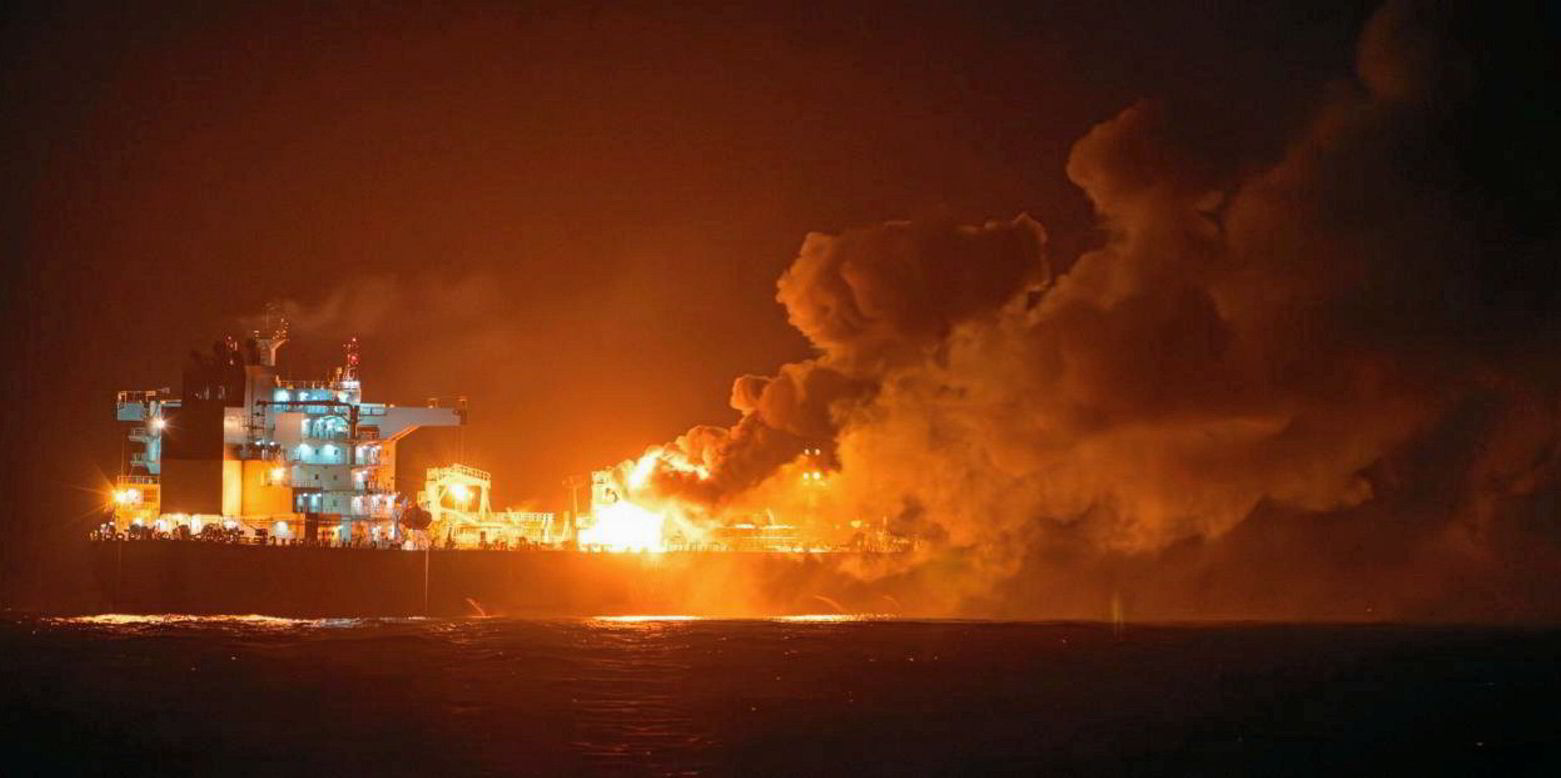Crude tanker voyages through the Red Sea have plummeted after the Houthi missile strike on Friday that set fire to a Trafigura-operated ship, according to data from Clarksons.
The five-day moving average of crude tankers arriving in the Gulf of Aden was down 61% on the 2023 average, Clarksons said in a daily market report.
More than 40 missile and drone attacks have been launched against commercial shipping since November, but the direct hit on the Marshall Islands-flagged, 110,000-dwt Marlin Luanda (built 2018) marked a rare success for the Iran-backed rebels.
“We’ve seen a significant drop in crude vessel activity in the Red Sea after an LR2 vessel caught fire following Houthi attacks last Friday,” Clarksons said.
US oil major Chevron is reportedly sending cargoes of Kazakhstan’s CPC Blend oil to Asia via the Cape of Good Hope rather than via the Red Sea, to avoid the risk of Houthi attacks.
The Marlin Luanda was carrying Russian-origin naphtha being shipped in line with Western sanctions, according to Trafigura.
The ship appeared to have been targeted because it is owned by UK-based Oceonix Services, owned by institutional investors advised by JP Morgan.
Traffic through the Red Sea was dominated by vessels carrying Russian oil in the days around the time of the attack, according to data from Vortexa.
Nearly two-thirds of the loaded tankers transiting the Bab el-Mandeb strait in the southern Red Sea from 23 to 27 January were hauling Russian crude or products, it said.
Fourteen vessels were carrying Russian crude and 13 were hauling products. A further 16 vessels were carrying cargoes from other origins, according to the data.
The Houthis have threatened to target ships linked to the US and UK after the two countries launched several air and naval strikes against the militant group in Yemen.
Read more
- Is ‘striking back’ the best way to tackle the Houthi menace to shipping?
- Iranian ‘spy ship’ and sanctioned VLCC sent for scrap as shadow fleet demolition sparks into life
- Euronav sells fleet data platform to expanding ZeroNorth
- Frontline’s VLCCs ‘still hold the key’ to earnings, DNB says
- Chevron pulls plug on Red Sea passage for Kazakh oil heading to Asia






